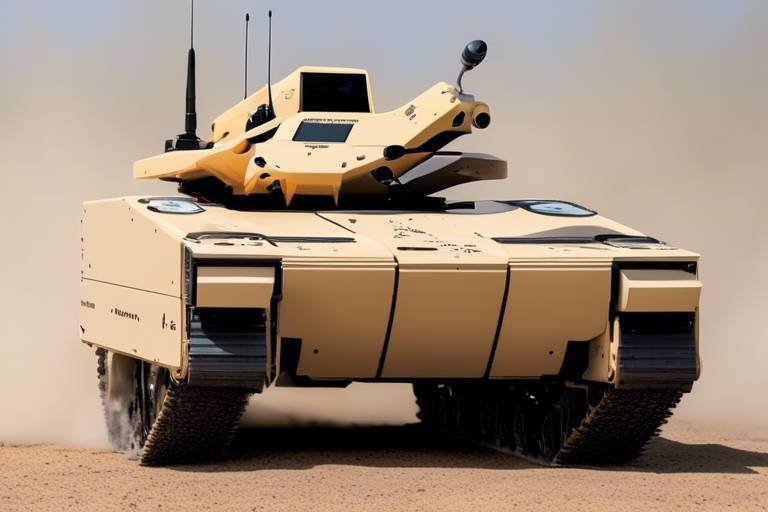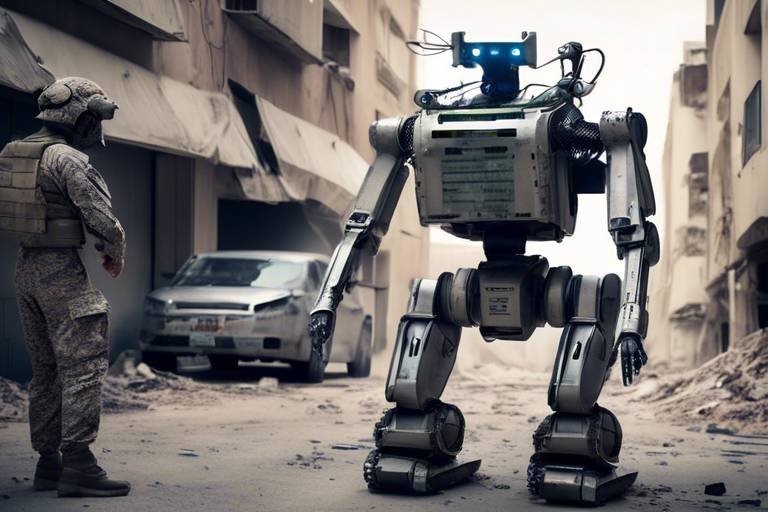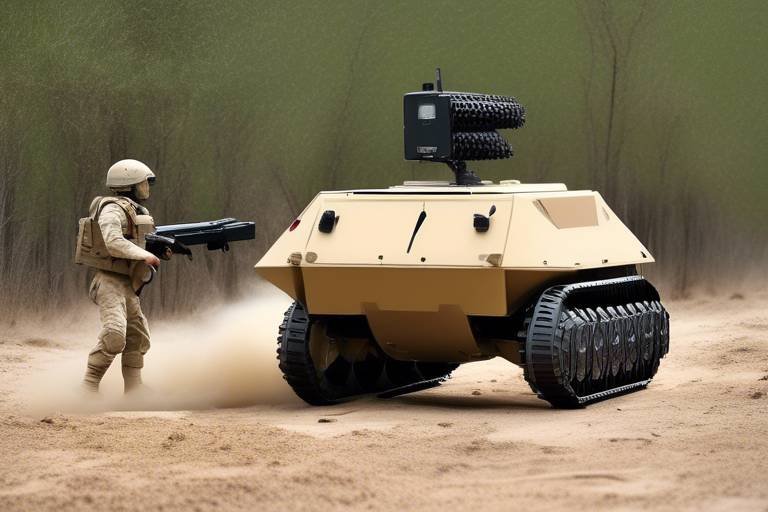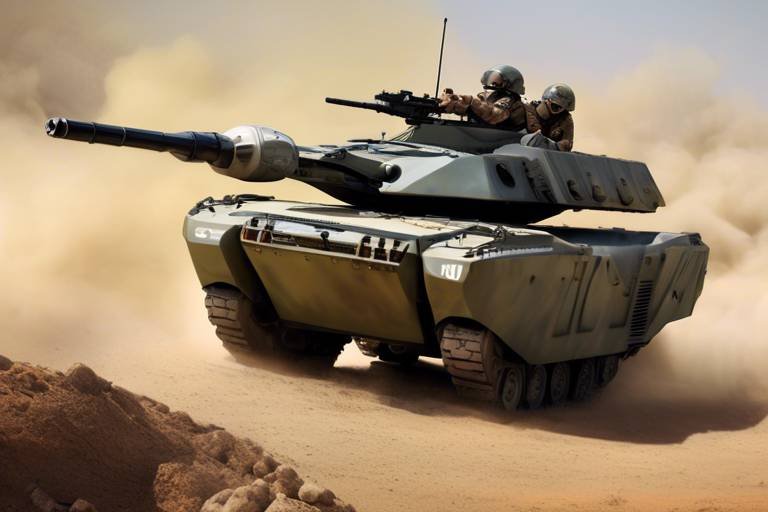Assessing the Use of the RQ-21A in Tactical Operations
The RQ-21A, a cutting-edge unmanned aerial vehicle (UAV), has emerged as a game-changer in tactical military operations. As modern warfare evolves, the need for advanced surveillance and reconnaissance tools has become more pronounced. The RQ-21A not only meets these demands but also enhances the overall effectiveness of military missions. This article delves into the remarkable capabilities of the RQ-21A, highlighting its operational advantages, challenges, and its significant impact on contemporary military strategies.
The RQ-21A is designed with versatility in mind, serving multiple roles within military frameworks. It excels in intelligence, surveillance, and reconnaissance (ISR) missions, providing commanders with real-time data to make informed decisions. With a wingspan of approximately 14 feet and a maximum takeoff weight of around 70 pounds, the RQ-21A strikes a balance between size and capability. Its robust design allows it to operate in diverse environments, making it a valuable asset for tactical operations. The UAV is equipped with advanced features such as:
- Advanced sensor technologies for enhanced data collection.
- Long flight endurance for extended missions.
- Seamless data transmission to ground control units.
These features enable the RQ-21A to perform effectively in various combat scenarios, solidifying its role as a critical component of modern military operations.
One of the standout characteristics of the RQ-21A is its advanced operational capabilities. Equipped with state-of-the-art sensor systems, the UAV can gather crucial intelligence that supports tactical missions. The ability to operate day and night, combined with robust data transmission features, empowers military units to respond swiftly to emerging threats.
At the heart of the RQ-21A's success are its cutting-edge sensors that facilitate real-time intelligence gathering. These sensors include:
- Electro-Optical Sensors: Providing high-resolution imagery for detailed reconnaissance.
- Infrared Sensors: Allowing for effective surveillance in low-light conditions.
These technologies are not just fancy gadgets; they are vital tools that significantly enhance situational awareness for military commanders. By gathering and relaying information in real-time, the RQ-21A empowers decision-makers to act decisively on the battlefield.
The integration of electro-optical and infrared sensors enables the RQ-21A to conduct missions around the clock. During the day, the electro-optical sensors capture crystal-clear images, while the infrared sensors excel in detecting heat signatures during nighttime operations. This dual capability ensures that military units maintain situational awareness regardless of lighting conditions, offering a tactical advantage that can be the difference between mission success and failure.
Another critical aspect of the RQ-21A's operational capabilities is its robust data link systems. These systems facilitate seamless communication between the UAV and ground control, ensuring that data is transmitted reliably and efficiently. In tactical operations, where every second counts, this reliable communication is crucial for mission success. The ability to share real-time data allows ground commanders to adjust strategies on the fly, making the RQ-21A an indispensable tool in modern warfare.
The RQ-21A's impressive flight endurance and operational range further enhance its effectiveness. With the ability to stay airborne for up to 12 hours and cover distances exceeding 100 nautical miles, the UAV can conduct prolonged surveillance missions without requiring frequent returns to base. This endurance is particularly beneficial in dynamic combat environments where situational changes can occur rapidly. The extended range allows military forces to monitor larger areas, providing a comprehensive view of the battlefield.
When it comes to tactical operations, the RQ-21A offers a plethora of advantages that contribute to mission success. By integrating advanced technology with real-time intelligence capabilities, the UAV significantly improves reconnaissance efforts while reducing risks for personnel.
One of the most significant advantages of the RQ-21A is its ability to enhance situational awareness for commanders. By providing timely intelligence, the UAV allows military leaders to make informed decisions based on the latest battlefield developments. Imagine being able to see the enemy's movements in real-time; this capability can drastically change the outcome of a mission.
Moreover, the RQ-21A plays a vital role in force protection. By conducting surveillance missions without putting personnel at risk, the UAV minimizes the chances of casualties during operations. This aspect is particularly important in high-stakes environments where the safety of troops is paramount. The RQ-21A acts as the eyes in the sky, allowing ground forces to focus on their objectives while staying informed about potential threats.
Despite its numerous advantages, the RQ-21A is not without challenges. Operational limitations such as environmental factors and technological constraints can impact its deployment and effectiveness.
Adverse weather conditions can pose significant challenges for the RQ-21A. Heavy rain, strong winds, and low visibility can hinder its operational capabilities. For instance, flying in foggy conditions may limit the effectiveness of its sensors, making it difficult to gather reliable intelligence. Military planners must consider these environmental factors when scheduling missions to ensure optimal performance.
Additionally, technological limitations can affect the RQ-21A's operational capabilities. Issues related to system reliability and maintenance may arise during tactical missions, potentially leading to unexpected downtime. Continuous advancements in technology are essential to address these constraints and ensure that the RQ-21A remains a reliable asset in the field.
- What is the primary use of the RQ-21A? The RQ-21A is primarily used for intelligence, surveillance, and reconnaissance missions, providing real-time data to military commanders.
- How long can the RQ-21A fly? The RQ-21A has a flight endurance of up to 12 hours, allowing it to conduct extended surveillance missions.
- What types of sensors does the RQ-21A use? The RQ-21A is equipped with electro-optical and infrared sensors for day and night operations.
- Can weather conditions affect the RQ-21A's performance? Yes, adverse weather conditions such as heavy rain and strong winds can hinder the RQ-21A's operational capabilities.

Overview of the RQ-21A
The RQ-21A, also known as the Blackjack, is a highly versatile unmanned aerial vehicle (UAV) specifically designed to meet the growing demands of modern military operations. With its ability to conduct intelligence, surveillance, and reconnaissance (ISR) missions, the RQ-21A stands out as a critical asset in the tactical toolkit of armed forces. This UAV is not just a flying camera; it is a sophisticated platform equipped with advanced technologies that provide real-time data and situational awareness.
At its core, the RQ-21A is engineered to operate in a variety of environments, making it suitable for both land and maritime operations. It features a modular design that allows for the integration of different payloads, enhancing its capabilities to adapt to specific missions. Here are some of the key specifications of the RQ-21A:
| Specification | Details |
|---|---|
| Wingspan | 14 feet |
| Length | 7.5 feet |
| Maximum Takeoff Weight | 150 pounds |
| Flight Endurance | Over 12 hours |
| Operational Range | Up to 100 nautical miles |
One of the standout features of the RQ-21A is its intended operational roles. Designed for tactical operations, it can perform a variety of missions including:
- Reconnaissance: Gathering intelligence on enemy positions and movements.
- Surveillance: Monitoring areas of interest for extended periods.
- Target Acquisition: Identifying and designating targets for precision strikes.
- Battlefield Assessment: Evaluating the impact of military operations and enemy capabilities.
With its ability to operate autonomously or under remote control, the RQ-21A enhances the decision-making process for military commanders. The UAV's advanced data processing capabilities allow it to analyze and relay information quickly, ensuring that commanders have the most accurate and timely data at their disposal. In a world where every second counts, this UAV acts as the eyes and ears on the battlefield, providing a crucial edge in tactical operations.
- What is the primary purpose of the RQ-21A?
The RQ-21A is primarily used for intelligence, surveillance, and reconnaissance (ISR) missions, providing real-time data to military commanders. - How long can the RQ-21A fly without refueling?
The RQ-21A has a flight endurance of over 12 hours, making it suitable for extended missions. - What types of sensors does the RQ-21A use?
The RQ-21A is equipped with various sensors, including electro-optical and infrared sensors, which enhance its ability to gather intelligence in different conditions. - Can the RQ-21A operate in adverse weather conditions?
While the RQ-21A is designed for versatility, adverse weather conditions can affect its operational capabilities.

Operational Capabilities
The RQ-21A unmanned aerial vehicle (UAV) is not just another drone; it's a game-changer in modern military operations. With its advanced technologies, the RQ-21A is designed to provide unparalleled support in a variety of tactical missions. Imagine having a bird's-eye view of the battlefield, equipped with cutting-edge sensors that can detect movement, gather intelligence, and relay crucial information back to command centers in real-time. This capability significantly enhances the operational effectiveness of military forces, allowing for quicker and more informed decisions.
One of the standout features of the RQ-21A is its sophisticated sensor systems. These sensors are the eyes and ears of the UAV, enabling it to perform its primary roles in intelligence, surveillance, and reconnaissance (ISR). The RQ-21A comes equipped with a range of sensor technologies, including electro-optical and infrared sensors, which allow it to operate effectively during both day and night missions. The ability to gather high-resolution imagery and thermal data is vital for assessing enemy positions and movements, making the RQ-21A an indispensable asset on the battlefield.
Equipped with an array of sensor technologies, the RQ-21A can gather critical intelligence that is essential for mission success. The UAV's sensor suite is designed to provide comprehensive situational awareness, allowing commanders to make informed decisions based on real-time data. The following are key sensor technologies integrated into the RQ-21A:
- Electro-Optical Sensors: These sensors capture high-resolution images during daylight, providing detailed visual intelligence.
- Infrared Sensors: Capable of detecting heat signatures, these sensors are crucial for nighttime operations and can spot hidden targets.
- Multi-Spectral Sensors: Offering a broader range of data collection, these sensors can analyze various wavelengths, enhancing target detection capabilities.
The integration of electro-optical and infrared sensors allows the RQ-21A to perform its missions around the clock. During the day, the electro-optical sensors provide clear imagery, while at night, the infrared sensors become invaluable for detecting heat signatures. This dual capability ensures that the RQ-21A can maintain situational awareness regardless of the time of day, which is crucial in dynamic combat environments. The ability to switch between these sensor types not only enhances the UAV's versatility but also significantly improves the quality of intelligence gathered.
Another critical aspect of the RQ-21A's operational capabilities is its robust data link systems. These systems facilitate seamless communication between the UAV and ground control stations, ensuring that data collected in the field is transmitted in real-time. This reliable data transmission is vital for effective tactical operations, as it allows commanders to receive immediate updates on the battlefield situation. The RQ-21A's data link systems are designed to operate under various conditions, which is essential for maintaining connectivity even in challenging environments.
When it comes to tactical missions, flight endurance and operational range are paramount. The RQ-21A boasts impressive flight endurance, allowing it to stay airborne for extended periods. This capability is particularly beneficial for long-duration surveillance missions, where maintaining a constant watch over a designated area can provide invaluable intelligence. The UAV's operational range further enhances its effectiveness, enabling it to cover vast areas without the need for frequent returns to base. This combination of endurance and range empowers military forces to monitor and respond to threats more effectively than ever before.
In summary, the operational capabilities of the RQ-21A UAV make it a formidable tool in modern military operations. Its advanced sensor technologies, reliable data link systems, and impressive flight endurance collectively enhance its effectiveness in providing critical intelligence and situational awareness. As military tactics continue to evolve, the RQ-21A stands out as a prime example of how technology is reshaping the battlefield.
Q: What is the primary function of the RQ-21A?
A: The primary function of the RQ-21A is to provide intelligence, surveillance, and reconnaissance (ISR) support to military operations.
Q: How does the RQ-21A enhance situational awareness?
A: The RQ-21A enhances situational awareness by providing real-time intelligence through its advanced sensor systems, allowing commanders to make informed decisions.
Q: What types of sensors are equipped on the RQ-21A?
A: The RQ-21A is equipped with electro-optical, infrared, and multi-spectral sensors, enabling it to operate effectively during both day and night missions.
Q: How long can the RQ-21A stay in the air?
A: The RQ-21A has impressive flight endurance, allowing it to remain airborne for extended periods, which is crucial for long-duration missions.
Q: What challenges might the RQ-21A face in the field?
A: The RQ-21A may face challenges such as adverse weather conditions and technological constraints that could impact its operational capabilities.

Sensor Technologies
The RQ-21A unmanned aerial vehicle (UAV) is at the forefront of modern military technology, and its are a key component that sets it apart. With a suite of advanced sensors, the RQ-21A is designed to gather critical intelligence, providing military commanders with the information they need to make informed decisions in real-time. Imagine being able to see an enemy's movements from miles away, all while keeping your personnel safe on the ground. That's the kind of power the RQ-21A brings to the table.
One of the standout features of the RQ-21A is its ability to operate with electro-optical and infrared sensors. These sensors allow the UAV to conduct missions both during the day and at night, which is crucial for maintaining operational flexibility. The electro-optical sensors capture high-resolution images, providing clear visuals that can be analyzed for reconnaissance purposes. Meanwhile, the infrared sensors detect heat signatures, making it easier to spot hidden targets or monitor troop movements under the cover of darkness. This combination of sensors significantly enhances the UAV's situational awareness, enabling commanders to react swiftly to changing battlefield dynamics.
Moreover, the RQ-21A is equipped with sophisticated data link systems that ensure seamless communication between the UAV and ground control stations. This robust data link is vital for transmitting real-time data and video feeds back to operators, allowing for immediate analysis and response. Think of it as a lifeline that connects the eyes in the sky with the decision-makers on the ground. The reliability of these data links is crucial, especially in tactical operations where every second counts. Without them, the effectiveness of the RQ-21A could be severely compromised.
To summarize, the sensor technologies of the RQ-21A are not just advanced; they are essential for modern military operations. They offer a level of intelligence gathering that was unimaginable just a few decades ago. As we continue to explore the capabilities of the RQ-21A, it’s important to recognize how these sensor systems contribute not only to mission success but also to the safety of military personnel. The RQ-21A is truly a game-changer in the realm of tactical operations.
- What types of sensors does the RQ-21A use?
The RQ-21A utilizes both electro-optical and infrared sensors to gather intelligence during day and night missions. - How does the RQ-21A communicate with ground control?
It employs robust data link systems that enable real-time data transmission and seamless communication. - What is the significance of the RQ-21A's sensor technologies?
These technologies enhance situational awareness, allowing military commanders to make informed decisions quickly.
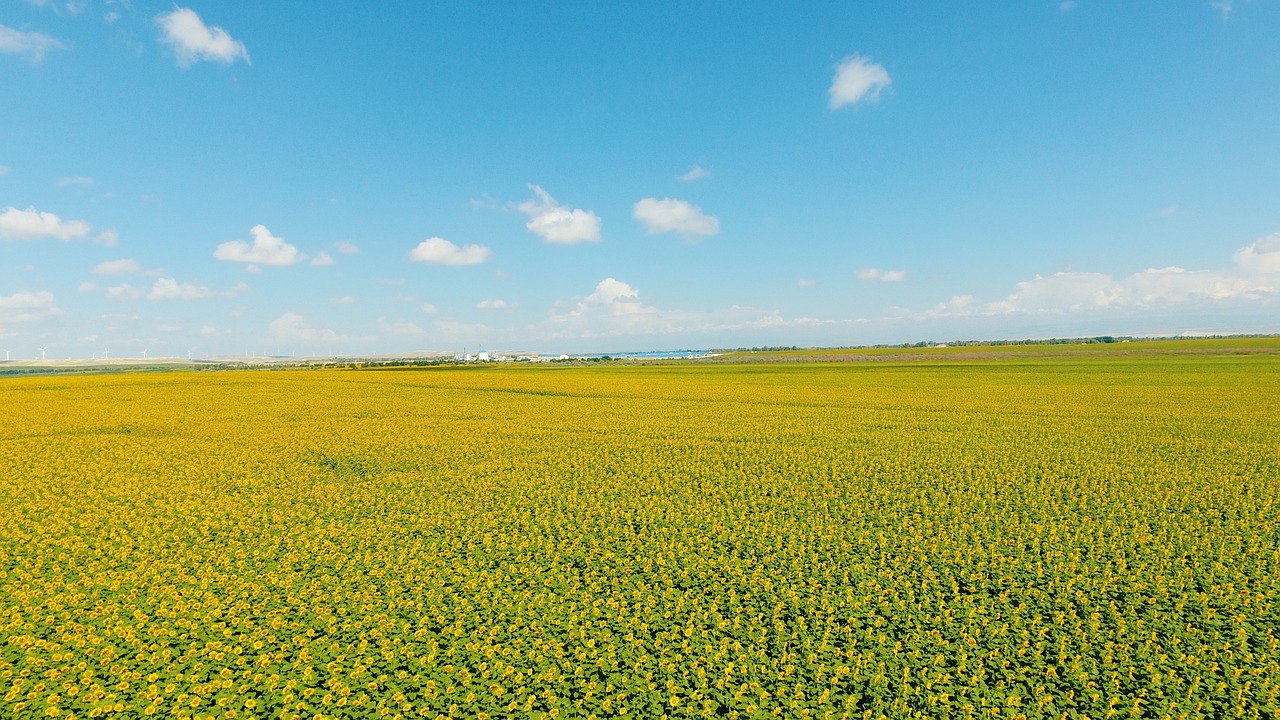
Electro-Optical and Infrared Sensors
The RQ-21A unmanned aerial vehicle (UAV) is equipped with state-of-the-art electro-optical and infrared sensors that significantly enhance its operational capabilities. These sensors are pivotal in providing real-time intelligence, allowing military operators to make informed decisions swiftly. Imagine having a bird’s-eye view of the battlefield, where every movement is captured in high-definition clarity, regardless of the time of day. This is the kind of advantage that the RQ-21A brings to the table.
Electro-optical sensors utilize visible light to capture images and video, making them essential for daytime reconnaissance. They provide high-resolution imagery that can be analyzed on the spot, giving commanders the information they need to act decisively. On the other hand, infrared sensors excel in detecting heat signatures, which means they can identify targets even in complete darkness or through obscurants like smoke and fog. This dual capability ensures that the RQ-21A can operate effectively around the clock, adapting to various mission requirements.
One of the most remarkable features of these sensors is their ability to work in tandem. For instance, during a tactical operation, the electro-optical sensor can provide a detailed view of a target area, while the infrared sensor can detect hidden threats that are otherwise invisible. This synergy not only enhances situational awareness but also improves the accuracy of intelligence gathering. The integration of these technologies enables operators to create a comprehensive picture of the operational environment, which is crucial for planning and executing missions.
Moreover, the data collected from these sensors can be transmitted in real-time back to ground control, allowing for immediate analysis and feedback. This capability is vital during critical moments when every second counts. As a result, the RQ-21A can significantly reduce the time between intelligence gathering and actionable decision-making. The effectiveness of these sensors is further demonstrated in various tactical scenarios, where their deployment has led to successful outcomes.
However, it is essential to recognize that while electro-optical and infrared sensors provide substantial benefits, they are not without limitations. For instance, the effectiveness of infrared sensors can be compromised by certain environmental factors, such as extreme temperatures or heavy rain. Understanding these limitations is crucial for optimizing the use of the RQ-21A in different operational contexts.
In summary, the integration of electro-optical and infrared sensors in the RQ-21A enhances its tactical capabilities, making it an invaluable asset for modern military operations. The ability to conduct surveillance and reconnaissance missions with such precision and reliability transforms the way military forces approach combat and intelligence gathering.
- What are the primary functions of the RQ-21A's sensors?
The primary functions include real-time surveillance, reconnaissance, and target identification both day and night. - How do electro-optical sensors differ from infrared sensors?
Electro-optical sensors capture images using visible light, while infrared sensors detect heat signatures, allowing for operation in low-light conditions. - Can the RQ-21A operate in adverse weather conditions?
While the RQ-21A is designed for versatility, extreme weather can impact the performance of its sensors. - What role does data transmission play in the effectiveness of the RQ-21A?
Reliable data transmission enables real-time analysis and decision-making, which is critical during tactical operations.

Data Link Systems
The RQ-21A unmanned aerial vehicle (UAV) is equipped with advanced that play a pivotal role in its operational effectiveness. These systems facilitate seamless communication between the UAV and ground control, ensuring that critical information is transmitted in real-time. Imagine trying to navigate a ship without a compass; that’s how crucial reliable data links are for the RQ-21A when it comes to executing its missions.
At the heart of the RQ-21A’s data link capabilities is its ability to maintain a robust connection over long distances. This is achieved through a combination of line-of-sight and beyond-line-of-sight communication technologies that allow operators to receive live video feeds and sensor data from the UAV. The integration of these systems ensures that commanders have access to up-to-the-minute intelligence, which can dramatically influence tactical decisions in a dynamic battlefield environment.
Furthermore, the RQ-21A's data link systems are designed to withstand various operational challenges, including interference and signal degradation. This is essential in combat scenarios where electronic warfare tactics may be employed by adversaries. The UAV employs frequency hopping and encryption techniques to mitigate these risks, ensuring that data integrity and confidentiality are maintained. In simpler terms, it’s like having a secure line of communication that’s hard for enemies to tap into, keeping vital information safe from prying eyes.
To illustrate the effectiveness of these data link systems, consider the following table that outlines key features:
| Feature | Description |
|---|---|
| Real-Time Data Transmission | Allows for live video and sensor data to be sent back to ground control, enabling informed decision-making. |
| Secure Communication | Utilizes encryption methods to protect sensitive information from interception. |
| Adaptive Frequency Hopping | Changes communication frequencies rapidly to avoid jamming and interference. |
| Long-Range Capability | Maintains effective communication over extended distances, crucial for reconnaissance missions. |
In conclusion, the data link systems of the RQ-21A are not just a technical feature; they are a lifeline that connects the UAV with its operators, ensuring that every mission is executed with precision and confidence. As military operations continue to evolve, the importance of these systems cannot be overstated. They serve as the backbone of modern tactical operations, enabling forces to remain one step ahead of their adversaries.
- What is the maximum range of the RQ-21A's data link? The RQ-21A can maintain effective communication over several hundred kilometers, depending on the operational environment.
- How does the RQ-21A ensure secure data transmission? It employs advanced encryption methods and frequency hopping techniques to protect against interception.
- Can the RQ-21A operate in adverse weather conditions? While it is designed for versatility, extreme weather can affect its communication systems, requiring careful mission planning.

Flight Endurance and Range
The RQ-21A unmanned aerial vehicle (UAV) is designed with impressive flight endurance and operational range, making it a formidable asset in tactical operations. With the ability to stay airborne for extended periods, the RQ-21A can cover vast areas, providing critical intelligence and reconnaissance without the need for frequent returns to base. Imagine being able to monitor a battlefield or a high-value target continuously for hours on end—this capability not only enhances operational effectiveness but also significantly reduces the risk to personnel on the ground.
Specifically, the RQ-21A boasts a flight endurance of approximately 12 hours and can operate at altitudes up to 15,000 feet. This combination of endurance and altitude allows it to gather intelligence over a broad spectrum, from urban environments to rugged terrains. The operational range of the RQ-21A extends to about 100 nautical miles from its ground control station, enabling it to conduct missions far beyond the immediate vicinity of its launch point. This range is crucial for missions that require deep penetration into hostile territory, where traditional manned aircraft might be at greater risk.
To put this into perspective, consider the following table that summarizes the key specifications related to the RQ-21A's flight endurance and range:
| Specification | Details |
|---|---|
| Flight Endurance | 12 hours |
| Operational Range | 100 nautical miles |
| Max Altitude | 15,000 feet |
This impressive flight profile allows the RQ-21A to carry out various missions, including surveillance, target acquisition, and battlefield management. The ability to remain in the air for long durations means that commanders can rely on the UAV for real-time situational awareness, allowing them to make informed decisions quickly. Furthermore, the UAV's capacity to operate at significant distances ensures that it can support multiple units simultaneously, providing a comprehensive view of the battlefield.
However, it's essential to recognize that while the RQ-21A's endurance and range are significant assets, they also come with challenges. For instance, maintaining communication links over long distances can be tricky, particularly in complex environments where terrain and weather can interfere with signal transmission. This is where the robust data link systems of the RQ-21A come into play, ensuring seamless communication between the UAV and ground control, thus enhancing its operational capabilities.
In conclusion, the flight endurance and range of the RQ-21A are pivotal to its role in modern military operations. By enabling extended missions and broad operational coverage, this UAV not only enhances tactical effectiveness but also provides a safer alternative for reconnaissance missions, ultimately contributing to mission success with minimal risk to personnel.
- What is the maximum flight endurance of the RQ-21A?
The RQ-21A has a maximum flight endurance of approximately 12 hours. - How far can the RQ-21A operate from its ground control station?
The operational range of the RQ-21A extends to about 100 nautical miles. - At what altitude can the RQ-21A fly?
The RQ-21A can operate at altitudes up to 15,000 feet. - What kind of missions can the RQ-21A perform?
The RQ-21A is capable of conducting surveillance, target acquisition, and battlefield management missions.

Advantages in Tactical Operations
The RQ-21A unmanned aerial vehicle (UAV) is a game-changer in modern military operations, offering a plethora of advantages that significantly enhance tactical effectiveness. Imagine having an eye in the sky that not only observes but also analyzes and relays crucial information in real-time. This capability transforms the battlefield, allowing commanders to make informed decisions swiftly. The RQ-21A's contributions to mission success are multifaceted, ranging from improved reconnaissance to enhanced safety for personnel on the ground.
One of the standout features of the RQ-21A is its ability to provide real-time intelligence. This is particularly vital in dynamic combat environments where conditions can change in the blink of an eye. The UAV's advanced sensor systems gather data that can be analyzed on-site, ensuring that commanders are equipped with the most current information. This level of situational awareness is crucial; it allows military leaders to adapt strategies on the fly, potentially turning the tide of engagements. For instance, the RQ-21A can identify enemy positions, track troop movements, and even detect potential threats before they become imminent dangers.
Furthermore, the RQ-21A plays a critical role in force protection. By conducting surveillance missions without putting personnel in harm's way, the UAV reduces the risk of casualties. This capability is especially important in hostile territories where ground forces might be vulnerable to ambushes or sniper fire. With the RQ-21A in the air, ground troops can operate with greater confidence, knowing that they have a reliable source of intelligence watching over them. This not only enhances the safety of personnel but also boosts morale, as soldiers feel supported by advanced technology.
In addition to enhancing situational awareness and protecting forces, the RQ-21A contributes to mission efficiency. The UAV can cover vast areas quickly, allowing for comprehensive reconnaissance that would be time-consuming and dangerous for human teams. For example, in a search-and-rescue operation, the RQ-21A can scout large regions in a fraction of the time it would take ground units, identifying safe routes and potential hazards along the way. This efficiency not only saves time but also ensures that operations can be conducted more effectively, ultimately leading to higher success rates.
Moreover, the integration of the RQ-21A into tactical operations can lead to cost savings in the long run. While the initial investment in UAV technology may be significant, the operational costs associated with manned missions—such as fuel, maintenance, and personnel—can be substantially reduced. By leveraging the RQ-21A for reconnaissance and surveillance, military forces can allocate resources more effectively, focusing on areas that require human intervention while relying on UAVs for routine monitoring.
In summary, the advantages of employing the RQ-21A in tactical operations are clear. From enhanced situational awareness to improved force protection and mission efficiency, this UAV is a vital asset in modern warfare. As military strategies evolve, the integration of advanced technologies like the RQ-21A will continue to shape the landscape of tactical operations, ensuring that armed forces remain one step ahead of potential threats.
- What is the primary function of the RQ-21A?
The RQ-21A is primarily designed for intelligence, surveillance, and reconnaissance missions, providing real-time data to military commanders. - How does the RQ-21A enhance situational awareness?
By utilizing advanced sensor technologies, the RQ-21A gathers and transmits critical information that helps commanders make informed decisions during operations. - What are the benefits of using UAVs like the RQ-21A for force protection?
The RQ-21A can conduct surveillance without risking personnel, thus minimizing casualties and enhancing the safety of ground troops. - Can the RQ-21A operate in adverse weather conditions?
While the RQ-21A is designed to withstand various environmental factors, extreme weather conditions can still impact its operational effectiveness.
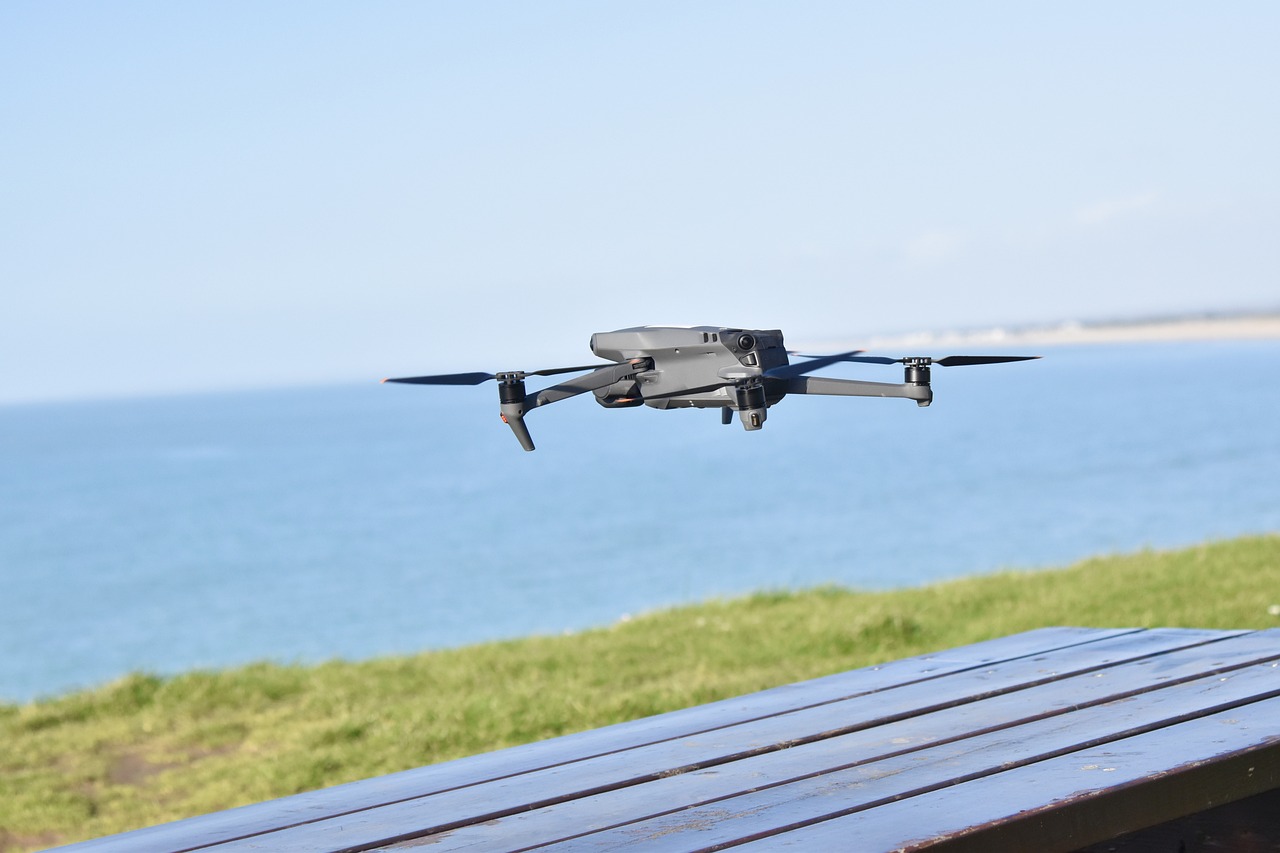
Enhanced Situational Awareness
In the chaotic realm of tactical operations, situational awareness can be the difference between mission success and failure. The RQ-21A unmanned aerial vehicle (UAV) serves as a game-changer in this regard, providing commanders with real-time intelligence that significantly enhances their understanding of the battlefield. Imagine being able to see the entire landscape from above, spotting enemy movements, and identifying potential threats before they become imminent dangers. This capability not only empowers military leaders but also transforms how decisions are made during critical moments.
The RQ-21A is equipped with advanced sensor technologies that feed valuable information back to ground control. This data is crucial for making informed decisions in the heat of battle. The UAV's ability to operate in various environments, day or night, means that commanders are never left in the dark. For instance, the integration of electro-optical and infrared sensors allows the RQ-21A to capture high-resolution imagery and thermal data, providing a comprehensive view of the operational area. This multi-faceted approach to reconnaissance ensures that no stone is left unturned, allowing for a thorough analysis of the situation.
Furthermore, the RQ-21A's data link systems enable seamless communication between the UAV and ground forces. This real-time data transmission is vital for tactical planning and execution. The ability to relay information instantly means that commanders can adapt their strategies on the fly, responding to evolving threats with precision. For example, if the UAV detects enemy troop movements, ground forces can be redirected immediately, preventing ambushes and enhancing overall operational effectiveness.
To illustrate the impact of enhanced situational awareness provided by the RQ-21A, consider the following table that outlines key benefits:
| Benefit | Description |
|---|---|
| Real-Time Intelligence | Immediate data collection and analysis for timely decision-making. |
| Comprehensive Surveillance | Ability to cover large areas, reducing blind spots in reconnaissance. |
| Adaptability | Real-time updates allow for quick adjustments to tactical plans. |
| Reduced Risk | Minimizes the need for ground personnel in high-threat areas. |
In conclusion, the RQ-21A's contribution to enhanced situational awareness cannot be overstated. It provides a critical edge in tactical operations, allowing military leaders to maintain a clear picture of the battlefield. As the landscape of warfare continues to evolve, the importance of such advanced UAVs will only grow, ensuring that forces remain one step ahead of their adversaries.
- What is the RQ-21A used for? The RQ-21A is primarily used for intelligence, surveillance, and reconnaissance missions to gather real-time data and enhance situational awareness.
- How does the RQ-21A improve situational awareness? By providing real-time intelligence through advanced sensors and reliable data transmission, allowing commanders to make informed decisions quickly.
- Can the RQ-21A operate in adverse weather conditions? While it is designed for versatility, extreme weather can still impact its effectiveness. However, it is equipped to handle a range of environmental challenges.
- What are the key features of the RQ-21A? Key features include advanced sensor technologies, robust data link systems, and significant flight endurance, all contributing to its operational effectiveness.
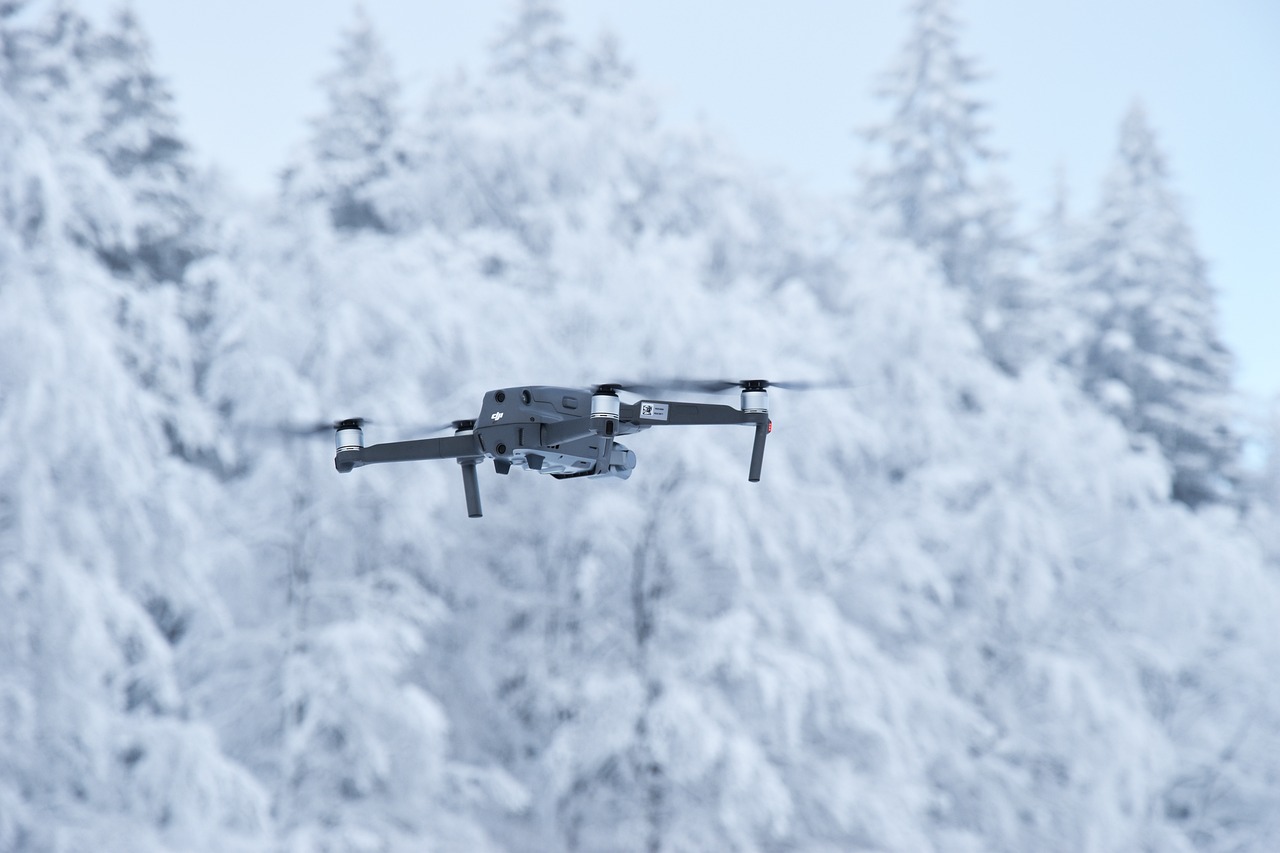
Force Protection
The RQ-21A unmanned aerial vehicle (UAV) significantly enhances force protection by allowing military units to conduct surveillance and reconnaissance missions without placing personnel in harm's way. Imagine a scenario where ground troops are tasked with monitoring a potentially hostile area. Traditionally, this would require soldiers to expose themselves to danger. However, with the RQ-21A, the risk is dramatically reduced. This UAV can fly over enemy territory, gathering critical intelligence while keeping its operators safely out of the line of fire.
One of the most compelling aspects of the RQ-21A is its ability to extend the reach of reconnaissance missions. The UAV can operate at altitudes and distances that would be perilous for manned aircraft. This capability allows commanders to maintain a constant watch over areas of interest, which is crucial for preempting threats and ensuring the safety of ground forces. Furthermore, the RQ-21A can relay real-time video feeds and data back to command centers, which empowers decision-makers with the information they need to act swiftly and effectively.
In addition to its surveillance capabilities, the RQ-21A contributes to force protection through its versatility in various operational environments. It can be deployed in diverse terrains, from urban landscapes to rugged mountains. This adaptability means that military units can rely on the UAV in a wide range of tactical situations, ensuring that they always have eyes on the ground without exposing troops to unnecessary risks.
Moreover, the RQ-21A helps to minimize casualties during operations. By utilizing this UAV for intelligence gathering, commanders can make informed decisions about troop movements and engagement strategies. This proactive approach can lead to fewer confrontations and, ultimately, a reduction in the number of personnel casualties. The UAV acts as a force multiplier, enhancing the effectiveness of ground troops while keeping them safer.
To illustrate the impact of the RQ-21A on force protection, consider the following table that summarizes its key contributions:
| Contribution | Description |
|---|---|
| Risk Reduction | Operates remotely, minimizing the exposure of personnel to threats. |
| Real-Time Intelligence | Provides immediate data to commanders, enabling timely decision-making. |
| Versatility | Can be deployed in various terrains, adapting to different operational needs. |
| Casualty Minimization | Reduces the likelihood of confrontations, leading to fewer personnel losses. |
In conclusion, the RQ-21A plays a pivotal role in enhancing force protection within military operations. Its ability to conduct surveillance without risking lives, coupled with its real-time data transmission capabilities, positions it as an essential asset for modern tactical missions. As military strategies continue to evolve, the importance of such UAVs in safeguarding personnel and maximizing operational effectiveness cannot be overstated.
- What is the primary function of the RQ-21A? The RQ-21A is primarily used for intelligence, surveillance, and reconnaissance missions to enhance situational awareness while protecting personnel.
- How does the RQ-21A reduce risks for ground troops? By conducting surveillance remotely, the RQ-21A minimizes the need for personnel to enter potentially dangerous areas.
- Can the RQ-21A operate in adverse weather conditions? While the RQ-21A is designed to operate in various environments, extreme weather may still affect its performance.
- What type of data can the RQ-21A transmit? The RQ-21A can transmit real-time video feeds and other critical intelligence data back to ground control.
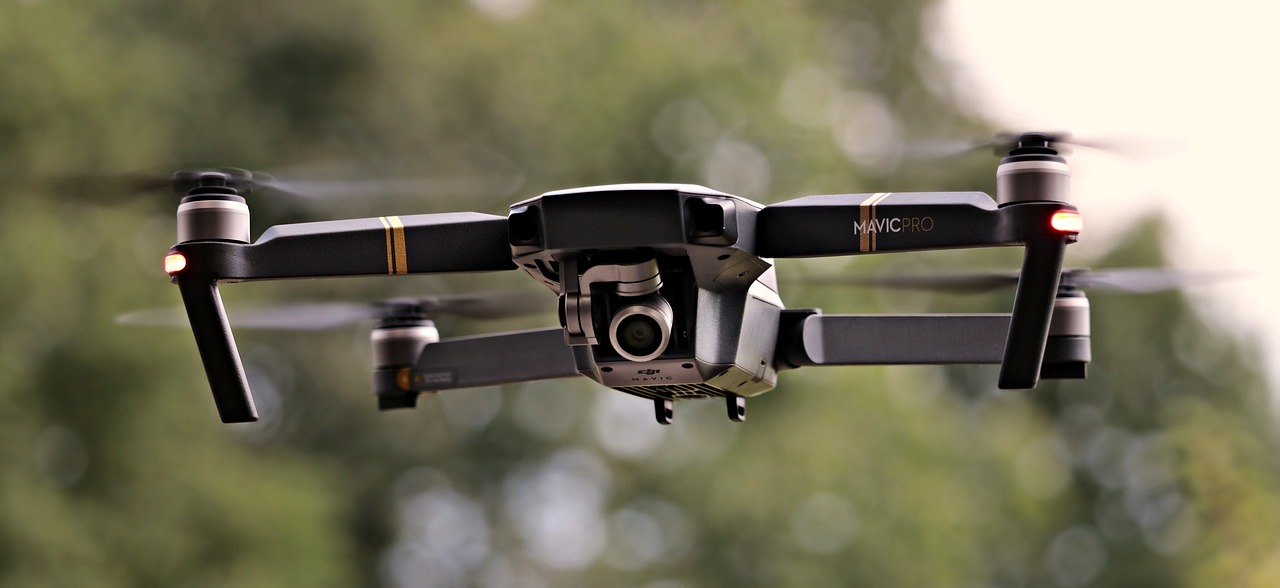
Challenges and Limitations
While the RQ-21A unmanned aerial vehicle (UAV) has revolutionized tactical operations, it is not without its challenges and limitations. Understanding these factors is crucial for military strategists and operators who rely on this technology to gain an edge in the field. One of the primary concerns is the impact of weather and environmental conditions on the RQ-21A's performance. Adverse weather, such as heavy rain, strong winds, or fog, can severely limit its operational capabilities. For instance, during inclement weather, the UAV may struggle with stability and navigation, leading to potential mission failures.
Moreover, the technological constraints of the RQ-21A can pose significant challenges. While it is equipped with advanced sensors and data link systems, these technologies are not infallible. For example, issues related to system reliability can arise, especially during prolonged missions where components may experience wear and tear. Maintenance becomes a critical factor, as any malfunction can lead to costly delays and operational setbacks. This is particularly concerning in high-stakes environments where timely intelligence is paramount.
Another aspect to consider is the limitations in data transmission. Although the RQ-21A features robust data link systems, there are instances where signal interference can occur, especially in densely populated or urban areas. This can hinder the UAV's ability to relay real-time information back to command centers, potentially leaving operators in the dark during critical moments. The effectiveness of the RQ-21A in tactical operations is thus contingent not only on its technological capabilities but also on the environment in which it operates.
In summary, while the RQ-21A offers significant advantages in tactical operations, it is essential to acknowledge its challenges and limitations. Weather conditions, technological constraints, and data transmission issues can all impact its effectiveness. As military operations continue to evolve, ongoing assessments and improvements in UAV technology will be necessary to address these challenges and enhance operational success.
- What are the main advantages of using the RQ-21A in military operations?
The RQ-21A enhances situational awareness, improves reconnaissance capabilities, and reduces risks to personnel during missions. - How does weather affect the RQ-21A's performance?
Adverse weather conditions such as rain, wind, and fog can limit the UAV's operational capabilities, affecting stability and navigation. - What are the technological constraints faced by the RQ-21A?
Issues related to system reliability, maintenance, and potential signal interference can hinder the UAV's performance during tactical missions. - Can the RQ-21A operate in urban environments?
Yes, but urban environments may pose challenges such as signal interference and obstacles that can affect its operational effectiveness.
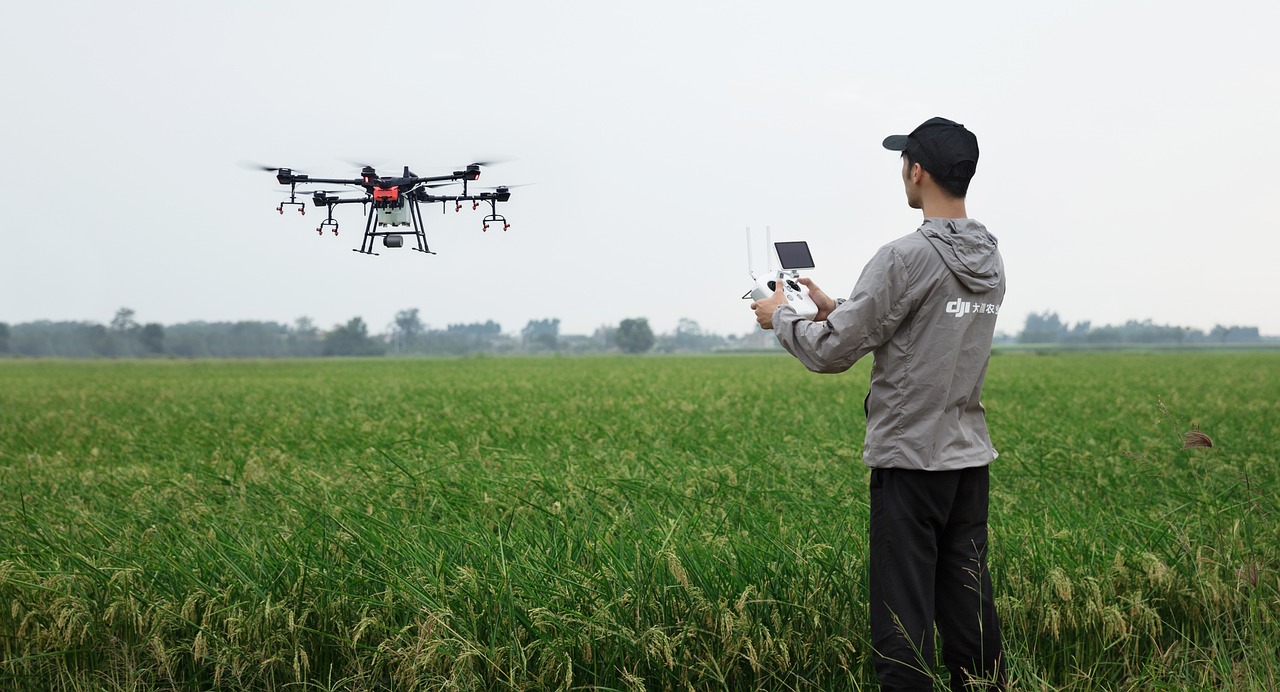
Weather and Environmental Factors
The RQ-21A unmanned aerial vehicle (UAV) is designed to perform under a variety of conditions, but it is not invincible. One of the most significant challenges it faces is the impact of on its operational capabilities. Just think about how a sudden storm can ground a plane; similarly, adverse weather can greatly hinder the RQ-21A's effectiveness in the field. Factors such as wind speed, precipitation, and temperature can directly affect its flight performance and mission success.
For instance, high winds can disrupt the UAV's stability, making it difficult to maintain a steady flight path. This instability can lead to poor data collection and reduced effectiveness during reconnaissance missions. Additionally, heavy rain or snow can obscure visibility, making it challenging for the RQ-21A to gather accurate intelligence. Imagine trying to see through a fogged-up window; that’s what the UAV experiences in such conditions.
Moreover, extreme temperatures can affect the UAV's battery life and overall performance. Cold weather can cause battery efficiency to plummet, while excessive heat can lead to overheating issues. This is where understanding the operational environment becomes crucial. Military planners must consider these factors when deploying the RQ-21A to ensure that it operates within its optimal parameters.
To illustrate how various weather conditions can impact the RQ-21A, let's take a look at the following table:
| Weather Condition | Impact on RQ-21A |
|---|---|
| High Winds | Instability affecting flight path and data collection |
| Heavy Rain | Reduced visibility and accuracy in intelligence gathering |
| Snow | Obscured sensors and potential for mechanical issues |
| Extreme Cold | Decreased battery efficiency and operational range |
| Extreme Heat | Risk of overheating and system failures |
In summary, while the RQ-21A is a formidable asset in tactical operations, its effectiveness can be significantly hampered by weather and environmental conditions. Military leaders must take these factors into account during mission planning to maximize the UAV's operational potential. Just as a sailor checks the weather before setting sail, commanders must assess the environmental landscape to ensure the RQ-21A can perform at its best.
- What are the primary weather conditions that affect the RQ-21A? High winds, heavy rain, snow, extreme cold, and extreme heat can all impact its operational capabilities.
- How does weather affect the flight stability of the RQ-21A? Adverse weather conditions like high winds can disrupt the UAV's stability, making it difficult to maintain a steady flight path.
- Can the RQ-21A operate in heavy rain? Heavy rain can obscure visibility and reduce the accuracy of data collection, which can hinder mission success.
- What should military planners consider regarding weather? Planners should assess environmental factors that might impact the RQ-21A's performance and plan missions accordingly.

Technological Constraints
The RQ-21A unmanned aerial vehicle (UAV) is undeniably a game-changer in modern military operations, but like any technology, it comes with its own set of limitations. One of the primary challenges faced by the RQ-21A relates to its system reliability. While the UAV is equipped with state-of-the-art technology, any malfunction or failure in the system can lead to mission failure, which could have serious implications on the battlefield.
Moreover, maintenance plays a crucial role in ensuring the RQ-21A operates at peak performance. The complexity of its systems means that regular upkeep is necessary to prevent issues that could arise during tactical missions. For instance, if a critical component fails during flight, the UAV may not be able to complete its mission or return safely. This can be particularly concerning in high-stakes environments where every second counts.
Another significant constraint involves the data transmission capabilities. While the RQ-21A is designed to maintain robust communication with ground control, factors such as distance and obstructions can interfere with data links. If the UAV is deployed in a challenging terrain or at a long range, the quality and speed of data transfer may diminish, leading to delays in real-time intelligence sharing. Such delays could hinder decision-making processes, putting troops at risk.
In addition to these factors, the RQ-21A is also influenced by technological advancements in the field of UAVs. As newer models are developed with enhanced features, the RQ-21A may struggle to keep pace with evolving operational demands. This could lead to a reliance on outdated technology, which might not perform as effectively in rapidly changing combat scenarios. The military must weigh the benefits of using the RQ-21A against the potential advantages of newer UAV technologies.
Lastly, environmental considerations cannot be overlooked. The RQ-21A's performance can be significantly impacted by weather conditions. For instance, heavy rain or strong winds can limit its operational capabilities, leading to mission delays or cancellations. This unpredictability can complicate planning and execution for commanders who depend on the UAV for critical reconnaissance and intelligence-gathering tasks.
- What are the primary technological constraints of the RQ-21A?
The RQ-21A faces challenges related to system reliability, maintenance needs, data transmission limitations, and the impact of environmental conditions. - How does weather affect the RQ-21A's operations?
Adverse weather conditions such as heavy rain and strong winds can hinder its flight capabilities and operational effectiveness. - What happens if the RQ-21A experiences a system failure?
A system failure during a mission can lead to mission failure and may compromise the safety of personnel relying on its intelligence. - Are there newer UAV technologies that might replace the RQ-21A?
Yes, as technology advances, newer UAV models with enhanced features may emerge, potentially outpacing the capabilities of the RQ-21A.
Frequently Asked Questions
- What is the RQ-21A and its primary purpose?
The RQ-21A is an unmanned aerial vehicle (UAV) designed primarily for intelligence, surveillance, and reconnaissance (ISR) missions. Its versatility allows it to be employed in various tactical operations, providing real-time data to enhance situational awareness on the battlefield.
- What are the key features of the RQ-21A?
The RQ-21A is equipped with advanced sensor technologies, including electro-optical and infrared sensors, which enable it to perform missions both day and night. Additionally, it boasts robust data link systems for reliable communication and impressive flight endurance, allowing for extended operational range during missions.
- How does the RQ-21A enhance situational awareness?
By providing real-time intelligence and surveillance data, the RQ-21A significantly enhances situational awareness for military commanders. This timely information is crucial for making informed tactical decisions, ultimately leading to more effective mission outcomes.
- What advantages does the RQ-21A offer in tactical operations?
The RQ-21A contributes to mission success by improving reconnaissance capabilities and minimizing risks to personnel. Its ability to conduct surveillance without putting troops in harm's way is vital for force protection and operational effectiveness.
- What challenges does the RQ-21A face during operations?
Despite its advantages, the RQ-21A encounters challenges such as adverse weather conditions that can hinder its operational capabilities. Additionally, technological constraints may affect system reliability and maintenance, which could pose risks during critical missions.
- How does weather impact the RQ-21A's performance?
Weather and environmental factors can significantly impact the RQ-21A's flight operations. Adverse conditions like strong winds, rain, or low visibility may limit its effectiveness and require careful mission planning to ensure successful deployment.
- What types of sensors are equipped on the RQ-21A?
The RQ-21A is equipped with various advanced sensors, including electro-optical and infrared sensors. These technologies allow the UAV to gather critical intelligence and perform effective surveillance, enhancing its operational capabilities in tactical scenarios.
- Can the RQ-21A operate in all weather conditions?
No, the RQ-21A's performance can be affected by severe weather conditions. While it is designed to operate in a range of environments, extreme weather can pose challenges that may limit its operational capabilities and mission success.





